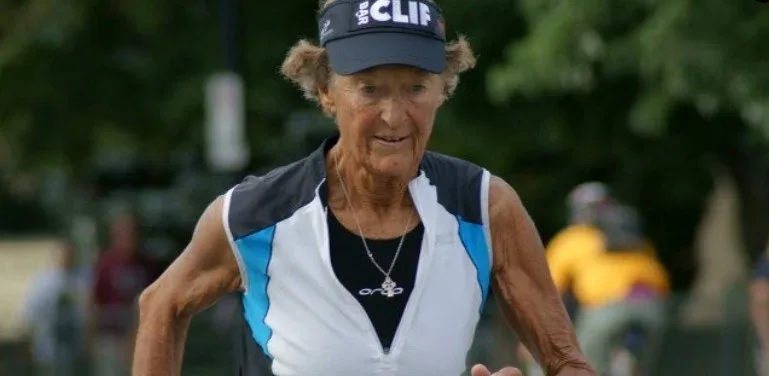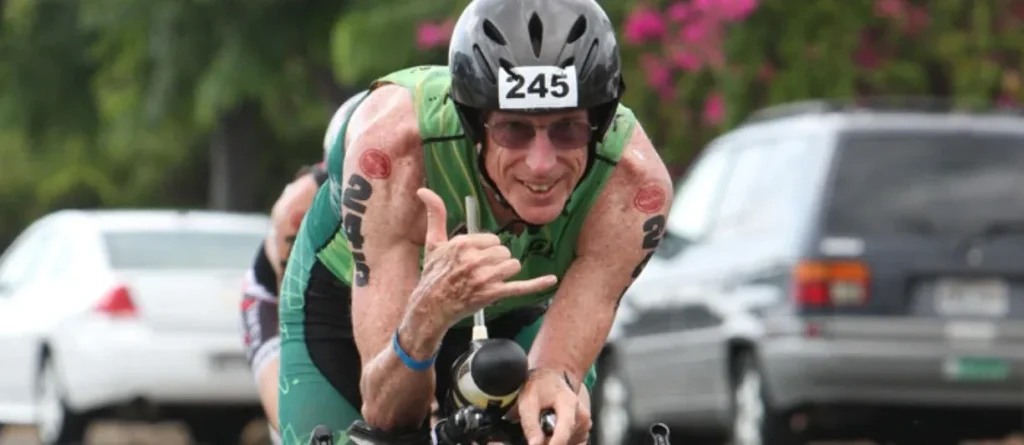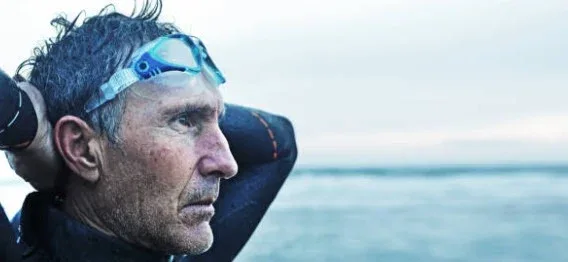As you probably know, triathlon consists of three sports; swimming, cycling, and running. It’s a great way to stay healthy, especially for the senior segment. You’ll be training your upper body, legs, and core muscles.
Margaret Hawkins, who manages the American Association of Retired Persons’ “Tri-Umph” triathlon series for people over 50, says, “Putting swimming, biking, and running together means that you don’t have to do one sport to exhaustion.” And that’s just great for an aging body!
Now, there is, of course, some limitation that comes with age. But that shouldn’t limit your ambitions. The sport of triathlon has many types of races. The Ironman distance is the most widely known, but the most participated races are the Olympic distance and the sprint distance. And according to ‘USA triathlon,’ there are twice as many 60-69 aged participants as there are athletes in their late teens, so there are no excuses!
- Sprint triathlon: swimming 0.5 miles (750 meter/2,460 feet), cycling 12.4 miles (20 kilometers), and running 3.1 miles (5 kilometers)
- Olympic: Swimming 0.93 miles (1.5km), cycling 24.8 miles (40km), and running 6.2 miles (10km)

Before You Begin Triathlon for Seniors Training
There are, however, a few cautions older athletes must be aware of. An excellent place to start is to get medical approval from your doctor before you start.
When it comes to triathlon training, you should be ready to dedicate between five and eight hours each week. Be sure that your schedule will allow for that
You need a training plan
If you’re new to triathlon or a seasoned Ironman competitor, a well-structured training plan is a must-have. Especially as a senior athlete. Indeed, I learned this the hard way with a knee injury that lasted four months.
I’ve found that 80/20 Endurance offers the most comprehensive and best training plans. I’ve personally relied on their guidance throughout my journey, from my first sprint triathlon to completing an Ironman. Their range of plans is impressive, and I continue to benefit from their monthly subscription, which provides access to all their programs. This subscription not only unlocks various training plans but also essential workouts to prevent injuries. Additionally, it includes analytics and complimentary access to TrainingPeaks Premium, an indispensable tool for any triathlete.
I’m currently on the 29 USD monthly subscription plan (see here), which offers comprehensive access all i mentioned. Notably, they provide an option to subscribe annually (see here), which is more cost-effective in the long run. Especially if you plan on doing multiple different races leading up to a final big race, as I did.
Their diverse range of training plans caters to various levels and goals in triathlon. This includes specialized plans for Ironman, Olympic distance, Half Ironman, Sprint distance and even a 5k plan if you’re just getting started. Each plan is meticulously designed to guide athletes through their training journey, ensuring progress and injury prevention. Whether you’re aiming for a specific distance or striving to improve your overall performance, these plans offer tailored guidance to meet your objectives.
By the way, if you click the links I provided, you’ll be directed to their checkout page. I’ve negotiated a great deal you, the readers. Once you complete the purchase, you’ll receive access to the platform via email. Plus, if you buy today, you can benefit from a 30-day money-back guarantee along with access to their coach consultation.
Training for a race
There are a variety of sprint-triathlon training schedules online, usually done by local triathlon clubs. We also suggest that you seek out the help of a professional triathlon coach. The coach will be able to provide you with individualized training plans – which are much more needed for an aging body.
As a senior, you should get a triathlon coach
As we get older, we become more prone to injuries. Getting a triathlon coach will help significantly minimize the chance of injuries.
As we age, it becomes harder to progress as an athlete. However, a triathlon coach will be able to provide you with an effective and custom-made training plan that ensures the results you’re looking for.
It’s also worth noting that there is a significant difference between following a pre-described training plan and working with a coach. A coach will draw up an initial plan of action, but adjustments will be made based on your progression through periodic communication.
Triathlon swimming as a senior
The swimming part is typically the most challenging part of a triathlon. Why? Because it’s said that swimming involves 85 percent skill and 15 percent endurance.
However, you shouldn’t be scared to take on swimming. Personally, I went from having zero swimming training to coming up second from the water at my first Ironman race. I actually loved the swimming sessions the most because I could see a clear progression from session to session. And that was a great experience!
I’ve had luck by contacting my local swim club for a swimming coach. Triathlete clubs typically also offer similar programs. Here, you’ll find both intermediate and advanced courses to fit your needs. It is also possible to work with a coach for swimming if you prefer one-on-one coaching, which is a bit more expensive.
Before choosing a race to conquer, I suggest you start testing your base skills as a swimmer. There is a big difference in swimming 0.5 miles for a sprint triathlon and 2.4 miles for Ironman distance.
Here’s the equipment you’ll require for the swimming portion of triathlons:
- Swim cap
- Swim goggles
- Earplugs (optional and beneficial for those who are prone to ear infections or swimmer’s ear)
- Bathing suit
- Wetsuit (allowed for all races that have temperatures of at or below 78°F as per USA Triathlon)
Cycling as a senior triathlete
When you race, it is essential to feel secure and confident riding with a group of participants. Triathlon and cycling clubs for beginners within your region will help you adjust to this. I suggest you sign up for one!
Any bicycle that complies with official requirements can be used for a triathlon. Review the rules of your particular event before the race. Further, measure your bike to ensure that you don’t violate any laws. Hence, don’t run the risk of being removed in the future. Wearing glasses or sunglasses and comfortable shorts will make participating in races more enjoyable.

Running as a senior triathlete.
Whether you’re picking up running for your triathlon race or have been running for a while, it’s essential to be particularly aware of your body during your runs. The running part of a triathlon, especially for seniors, is where most injuries occur.
I would suggest consulting with a triathlon coach (or a regular running coach) that can work with you and your specific needs.
The right running equipment is essential for all those who train for the triathlon. A well-padded pair of socks and footwear with ample cushioning and support can make running more comfortable.

Final words
Triathlon training as a senior will provide you with an exciting fitness experience. Be prepared to embrace the fantastic community of people that surrounds the sport! Also, be sure to soak in the joy of your training. Triathlon training is genuinely about the journey and not the destination.
